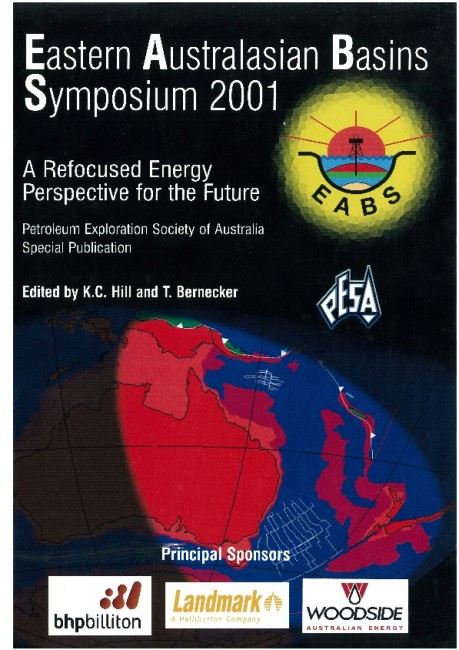Publication Name: Eastern Australian Basins Symposium 2001
Authors: K. Liu and K.A.W. Crook
Date Published: November 2001
Number of Pages: 32
Reference Type: Magazine Article
Abstract:
The Neogene sedimentary basins in northern Papua New Guinea are closely associated with embayments and promontories on the Australian Plate margin. Eight plate promontories and seven embayments have been identified along the collision zone from the Ramu Basin to the present collision point in the western Solomon Sea. The evolution of those basins was directly controlled by the Neogene arc-continent collision betweenthe Finisterre Arc Terrane and the Australian plate.
The evolution of these basins is exemplified by the history of the Neogene Markham Basin. The Markham Basin was initially developed as a remnant basin in the Miocene between two plate promontories on the Australian plate margin and evolved into a slope basin in the Pliocene and an intra-montane basin in the Pleistocene. Sedimentary facies within the basin change from deep-water basin floor deposits sourced primarily from the Australian plate to submarine fan, fan delta and alluvial fan deposits sourced from the Finisterre Terrane.
During an oblique collision of two plates, the irregular geometry of the under-riding plate controls the initiation, development and preservation of sedimentary basins. Sedimentary basins are firstly developed around
the embayments forming isolated remnant basins, which receive sediments primarily from the under-riding plate. As the collision continues, the basins are elevated and incorporated onto the overriding plate, forming slope basins. Sediments are then sourced from the upper plate. The basins will be eventually elevated above the base level forming intra-montane basins within the sutured part of the collision zone during the latest stage of the collision.
Using correlation of equivalent tectono-sedimentary regimes along the Ramu-Markham Collision Zone, we estimate that the collision propagation rate along the collision zone is 39 - 55 km/My eastwards, suggesting the initial collision between the Finisterre Terrane and the Australian plate was a latest Middle Miocene to earliest Late Miocene event.


